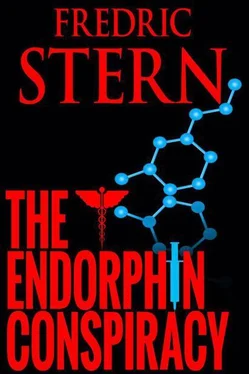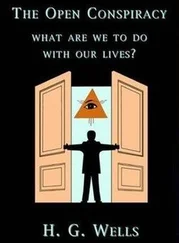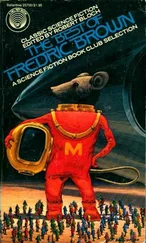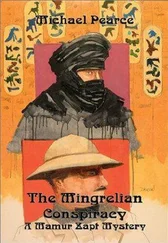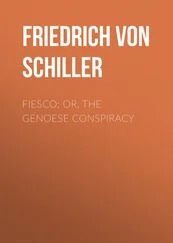“The bad news I have to tell you in person. I don’t want to say more over the phone. You never know who might be listening. Meet me at the same place as last time. Tonight. Ten o’clock. Later. Hey, be careful, okay?”
Geoff replayed Stefan’s message to be sure he hadn’t missed anything. Stefan hesitated and cleared his throat between words, something he did only when he was nervous. Geoff felt concern for his brother, knew he felt like he was sitting on a time-bomb, knew he might in fact be doing just that. He hit speed-dial, tried to call Stefan. No answer, just voice mail.
It was only five o’clock. Geoff had a couple of hours to try and crack the coded message. He moved to the kitchen table and removed the sheet from his fanny pack. He placed the message on the table in front of him, pad, pencil and day timer alongside it, sat down. He studied the message.
Geoff had read coded messages before. It was a standard part of Navy Seal training, how mission directives were sent. Though the battalion commander read most of the messages, it was essential for every member on a mission to be able to decipher coded messages in case of injury, death, or separation from the commander or communications officer.
Geoff studied the pattern carefully, made notes on his legal pad. The smallest number was a 01, the largest a 52. The vast majority of the numbers were between 01 and 28. He concluded these must each represent letters of the alphabet, 52 probably the number that oriented the reader to the layout and pattern of the coded message in some way.
Geoff scanned the lines with his pencil, looking for any repeating patterns. He noted the frequent use of the number 12, and deduced this number probably represented a space between words. Some senders chose to use these, others did not. Looked like this one did. The trick to decoding was knowing the pattern and which number started the sequence of assignment with which letter of the alphabet.
Intelligence officers—at least in Naval Intelligence—had developed a number of ways to throw off anyone trying to break a code. Since there was no way, even with the use of a computer to know which of these tricks were being used in this case, Geoff fell back on what he knew and began trying familiar ciphers, those related to the monthly calendar. A recent day timer or calendar was essential. This process could take hours or days. Hours he had. Days he did not.
Geoff thought back to the code most commonly used in the Navy, the January Cipher. The sequence of number assignment was set by the January calendar of a certain year. Geoff glanced back at the first few numbers in the message. 09-08-02-02-12. He ignored the 12 and assumed that the first four numbers set the sequencing, 09 probably indicating the year and the orientation, horizontal or vertical. Since the message was printed horizontally, he made the assumption “9” in the right column of the digit indicated vertical, “0” horizontal. The number 09, then, must indicate the calendar year 2010.
Usually codes were assigned from current year back, not forward, since not everyone had a calendar that included dates two years ahead. Geoff flipped to the front page of his day timer. It contained a 2010 calendar. He then examined the month of January and tried to apply the other principals of ciphering he knew.
The second number, 08, was the day of the message. The month was assumed to be the current month. The third number, 02, how many days to subtract from the second number to find the true date of the message. The fourth number, 02 again, was usually the critical one, indicating with which Friday of the month—that was the convention used—to begin the sequencing, assigning the letter of the alphabet corresponding to that date as the number 01.
Geoff penciled in his first attempt to crack the code. July 6, 2010. X-U-J-H-N-W. He came up with nonsense, knew he was wrong. Geoff paused, considered an alternative. Maybe he had the “09” backwards, the “0” representing the 2010 calendar year and the “9” demonstrating horizontal orientation of the message. R-T-P-E-W-F. Gibberish once again.
Geoff considered different months to orient the sequencing. First he tried December, using both 2010 and 2009 calendars, then he tried June. Both were months he knew were used in ciphers. Each drew a blank. Geoff stared at the message, bit his lip in frustration. He had to break this code. He knew it contained valuable information.
Then he tried the month of February. The February cipher was the code he’d learned encryption on, but he’d assumed it had long since been discarded. First 2010. Nothing. Then 2009. Geoff jotted down his results. T-Q-F-D-M-S. Shit. He’d thought he was onto something.
Geoff closed his eyes and tried to visualize the last time he had decoded a message. He had been having a problem and had gone to the communications officer, who gave him a few helpful hints. What were they? One had to do with ordering of the letters to assign the code, the other with spaces.
Z. That was it. The ordering began with the letter Z at the front of the alphabet, not A! He tried it again, this time starting with the letter P as number 1, since it was the seventeenth letter of the alphabet, corresponding to the date of the second Friday in February, 2010, when Z was before A.
Z A B C D E F G H I J K L M N O P Q R S T U 11 13 14 15 16 17 18 19 20 21 22 23 24 25 26 27 01 02 03 04 05 06
V W X Y
07 08 09 10
URHFOT TRBOSNJSSJ__O
Geoff recognized a pattern. The message was beginning to take shape. He was close, but the sequence was off by a letter or two. Somehow, it had to relate to the other hint his old navy buddy had told him about. Something to do with spaces.
Geoff looked over the entire message once again, and noted the number 28 was used several times, though not as often as the number 12, which he was still sure corresponded to a space between words. Two numbers, not just the number 12, had to have specific purposes. What could it be?
Numbers. Of course. The February cipher indicated a number would be coming instead of a letter after the number 11 was seen in the message. 12 indicated a space, 11 a number. Geoff reordered the sequence, this time skipping 11 and 12.
Z A B C D E F G H I J K L M N O P Q R S T U 13 14 15 16 17 18 19 20 21 22 23 24 25 26 27 28 01 02 03 04 05 06
V W X Y 11= number to follow 12= space
07 08 09 10
Then he deciphered the encrypted message:
URGENT TRANSMISSION CODE RED SIGMA PROJECT INFILTRATED BY AGENT FROM THE IGS OFFICE MONITORING SITUATION CLOSELY NEUTRALIZATION ORDERED DO NOT ATTEMPT TO INTERFERE BLUEBIRD
Geoff read the message over, exhaled to release the tension. He tapped his foot nervously. What he had been calling experimentation with his patients was an organized conspiracy— the Sigma Project —with Balassi and whoever Bluebird was at the center. Pederson had to be in on it. Lord knew who else was involved.
They had tried to take Geoff out of the loop by suspending him. If an agent from the IG’s—Inspector General’s—office was infiltrating the project, something big was happening here. That much was obvious. So was the term “neutralization.” He had to do something to contact the agent, find out who it was. Could it be his anonymous pen pal, Proteus?
It was worth a try. Stefan said he’d have information for him tonight.
The problem was, the message was already over twenty-four hours old. The agent, whoever it was, might be dead by now.
Geoff checked his watch as he walked down the dark and musty corridor to the autopsy lab: 7:54 p.m. Better to be a few minutes early, get what he needed and get out so he could head downtown and meet Stefan. Geoff was worried about him. He had left him a message to rendezvous at nine instead of ten o’clock. With the order to neutralize the agent foremost on Geoff’s mind, every minute counted. He reached down to his left calf and checked to be sure his Colt was in its holster. It was. O’Malley had taken his combat knife, but not his pistol.
Читать дальше
